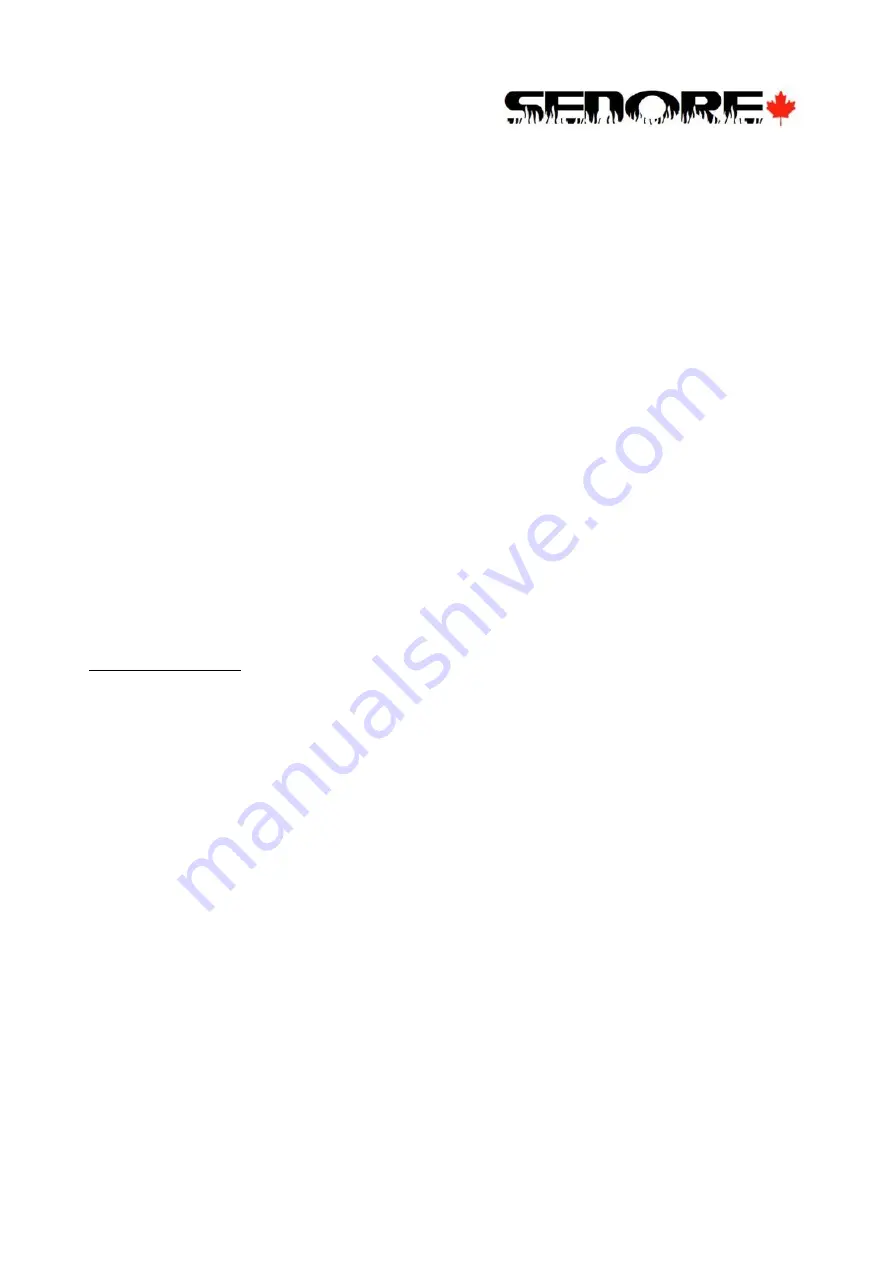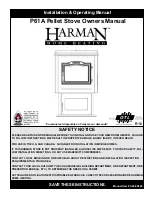
11
Several factors affect draft: chimney height, cross-sectional area (size), and temperature of the
chimney, as well as the proximity of surrounding trees or buildings. As a result, a short masonry
chimney on the exterior of a house will give the poorest performance. This is because it can be
very difficult to warm the chimney thereby creating inadequate draft. In extremely cold northern
areas it may be necessary to reline the chimney or extend its height to help establish draft. Con-
versely, a tall masonry chimney inside the house is easier to keep warm and will perform the best.
Finally, a chimney that goes straight up works best. If you have an offset or elbows in your chim-
ney you may have to add height to compensate.
Symptoms you may experience if your chimney is too low include:
It takes longer than five minutes to get to the required 550°F stack temperature.
You burn through your load of fuel faster than the quoted times.
Stack temperature runs too low (around 100°F)
If you know you must go higher with your chimney, but you are not sure how high, you could tem-
porarily fasten a piece of stovepipe on top of your chimney. When you have found the correct
height, replace this with proper insulated chimney.
CSA CAN-B365 gives the necessary chimney national requirements for Canada. However, many
local codes differ from the national code to take into account climate, altitude, or other factors.
Notice: It is important that you check with your local building officials to find out what codes apply
in your area before installing your new Sedore woodstove. Remember: Your local inspector has
the final authority in approving your installation. It is always best to consult with them prior to the
installation.
Masonry Chimneys
When installing the Sedore woodstove into a masonry chimney you must conform to all of the fol-
lowing guidelines:
The chimney flue size should not be less than the cross-sectional area of the stove flue collar.
The cross-sectional area of the flue of a chimney with no walls exposed to the outside below the
roofline shall not be more than three times the cross-sectional area of the stove flue collar.
The cross-sectional area of the flue of a chimney with one or more walls exposed to the outside
below the roofline shall not be more than two times the cross-sectional area of the stove flue
collar.
Larger chimney flues should be relined with a listed or code approved liner.
The masonry chimney must have a fireclay liner or equivalent, with a minimum thickness of
5/8” (16mm) and must be installed with refractory mortar. There must be at least 1/4” (6,35mm)
air space between the flue liner and chimney wall.
The fireclay flue liner must have a nominal size of 8” X 8”, and should not be larger than 8” X 12”.
If a round fireclay liner is to be used it must have a minimum inside diameter of 6” (157mm) and
not larger than 8” (208mm) in diameter. If a chimney with larger dimensions is to be used, it
should be relined with an appropriate liner that is code approved.
The masonry wall of the chimney, if brick or modular block, must be a minimum of 4”(106mm)
nominal thickness. A mountain or rubble stone wall must be at least 12” (310mm) thick.
Содержание SEDORE
Страница 30: ...30 Domestic Hot Water Schematic Radiant Heater Schematic...
Страница 31: ...31 Parts Diagram...












































